
How Does Wind Power Drive the Wheel of Innovation in Sustainable Architecture?
the world today is facing increasing environmental challenges, and renewable energy, such as wind energy and others, has become one of the innovative solutions that cannot be ignored.
Construct Vision Team
1/14/202510 min read
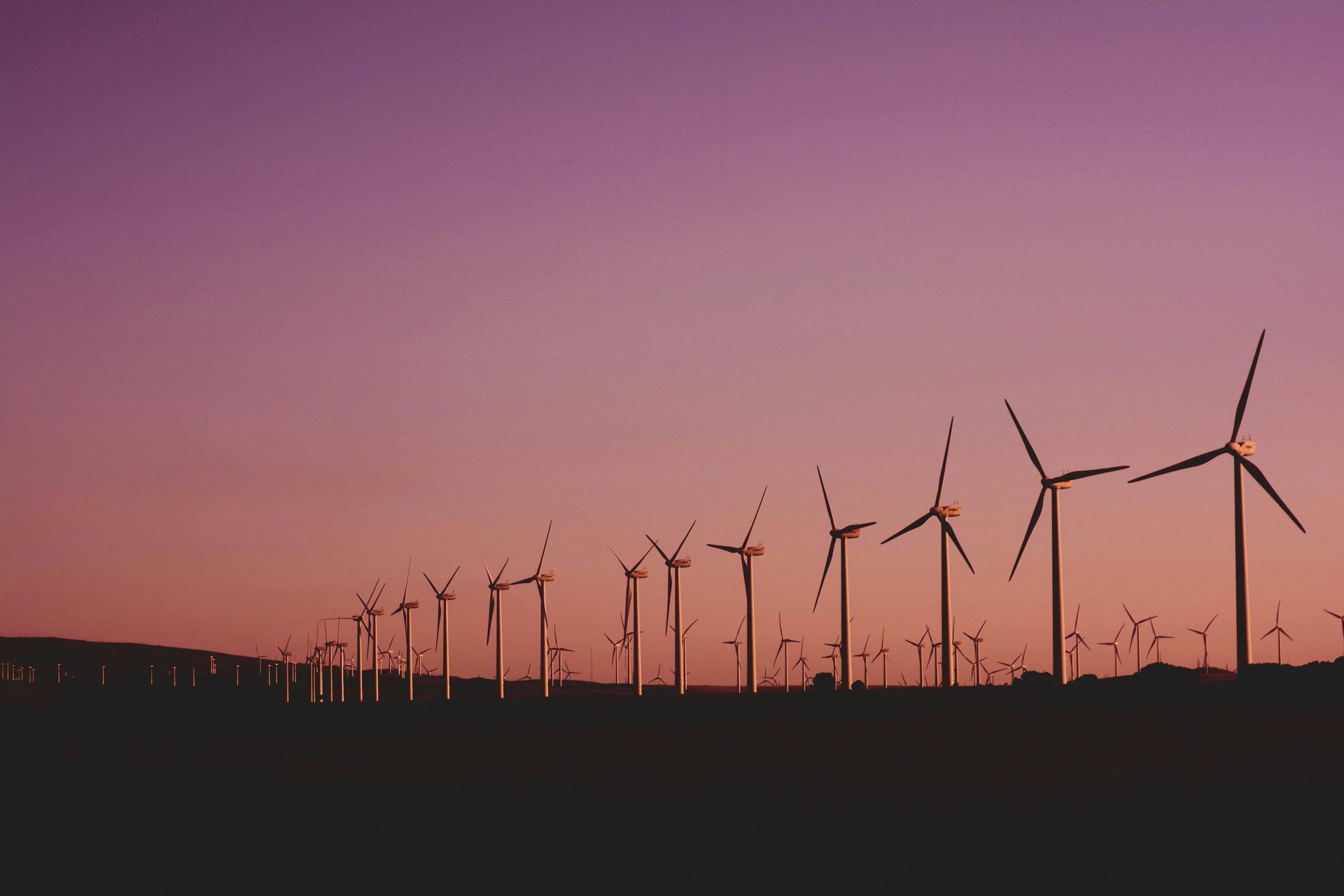
Wind is one of the most important sources of renewable and completely clean energy, and it receives great attention due to its environmental and economic advantages.
Wind kinetic energy is converted into electrical energy through wind turbines, which convert wind movement into mechanical energy that rotates an electric generator.
Today's world is facing increasing environmental challenges, and renewable energy, such as wind energy and others, has become one of the innovative solutions that cannot be ignored. According to the report of the International Energy Agency (IEA): (It is expected that wind energy will contribute 18% of total renewable energy worldwide by 2030), but what is interesting is the possibility of effectively integrating this energy into architectural designs.
In many smart cities and sustainable architectural projects, wind energy is utilized to reduce operating costs and reduce carbon emissions. For example, according to a study conducted by the California Energy Commission, buildings that contain small wind turbines can reduce electricity consumption by up to 30%. Residential or commercial buildings that are designed with naturally ventilated facades can benefit from the wind to reduce reliance on electrical air conditioning systems. If we add small wind turbines to the energy system in them, we are talking about real opportunities to generate renewable energy specific to the building itself.
In the architectural field, there are many projects that have succeeded in integrating wind energy in an innovative way.
The amount of energy provided by wind farms varies according to several factors, such as:
• The size of wind turbines.
• Wind speed.
• The location of the wind farm (areas with strong and continuous winds are the best).
• The technology used.
Wind energy contributes significantly to reducing reliance on fossil fuels and reducing carbon emissions, but the amount of savings varies from place to place and from project to project.
Wind farms require large areas of land, especially for large projects. Therefore, it is possible to take advantage of land that is not suitable for agriculture, such as coastal areas or deserts. Wind farms also need areas with strong and continuous winds. Coastal areas, hills, and open areas in general are usually the best for generating wind energy.
The cost of wind energy:
• The cost of establishing the farm: includes the cost of purchasing land, wind turbines, control systems, and electricity networks.
• The cost of operation and maintenance: includes the cost of maintaining and operating turbines.
The cost of generating wind energy has decreased significantly in recent years with technological development, making it competitive with traditional energy sources in many regions.
Pioneering Projects in the Field of Wind Energy: Real Figures and Case Studies:
There are many pioneering projects in the field of wind energy around the world, which have achieved great success and provide real figures that can be benefited from. These farms contribute to combating climate change and achieving a more sustainable future.
Hornbeck Wind Farm in Denmark:
Hornbeck Wind Farm in Denmark is one of the largest offshore wind farms in the world. This farm is characterized by its high efficiency and its ability to generate large amounts of clean energy. Its wind turbines are fixed on the seabed on special platforms, instead of being fixed on land.
The production capacity of the Hornbeck farm is more than 400 megawatts, which makes it capable of supplying hundreds of thousands of homes with electrical energy. The Hornbeck farm has also contributed significantly to reducing greenhouse gas emissions in Denmark.
Jaisalmer Wind Farm:
Jaisalmer Wind Farm is located in the Indian state of Rajasthan, and it is the largest onshore wind farm in India. This farm contributes significantly to increasing the share of renewable energy in the Indian energy mix.
The farm covers a vast area of desert land, providing sufficient space for the installation of a large number of wind turbines. The area is characterized by the presence of strong and steady winds throughout the year, making the site ideal for generating wind energy. The farm contributes to achieving the sustainable development goals in India by providing clean and green energy.

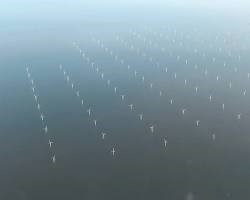
Gansu Wind Farm: The Largest Wind Farm in the World
Gansu Wind Farm is located in Gansu Province in northwestern China, and it is the largest wind farm in the world in terms of production capacity. This farm plays a vital role in China's efforts to achieve carbon neutrality.
The farm is characterized by its enormous production capacity, which contributes significantly to meeting the energy needs in China. This farm reflects the large investment that China is making in the field of renewable energy.
The farm uses the latest technologies in the field of wind turbines, which ensures high efficiency in generating energy."
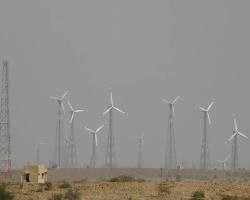

Comparison of some of the world's largest wind farms:
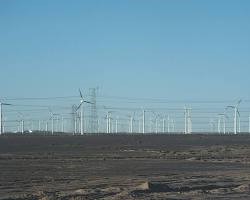

We must not forget the pioneering experience of the United Kingdom in this field, which is mentioned in our article (Clean Energy Revolution: Exploring Sustainable Solutions Shaping Our New World) for those who want to learn more about clean energy sources.
The Importance of These Farms:
These large farms contribute to achieving many important goals, including the following:
• Enhancing energy security and reducing reliance on fossil fuel imports, and reducing carbon emissions.
• Creating new job opportunities in local areas.
• Stimulating economic growth in the areas where they are located.
Why Are Wind Farms Built at Sea?
There are several reasons for this choice:
• Wind Speed: Wind speed is usually higher and more stable at sea compared to land, which increases the efficiency of energy generation.
• Space: There are no restrictions on the available space for building offshore wind farms as is the case on land, which allows for the construction of larger and more productive farms.
• Visual Impact: The visual impact of offshore wind farms is less compared to onshore farms, which reduces community opposition.
There may be some hybrid wind farms that contain turbines fixed on both land and sea.
The Future of Wind Energy:
It is expected that the wind energy sector will experience steady growth in the coming years, driven by the factors mentioned above. Experts also expect that wind energy will play a crucial role in achieving sustainable development goals and reducing climate change.
The field of wind energy has witnessed tremendous technological developments in recent years, which have led to increasing the efficiency of wind turbines and reducing their cost. Here are some of the most prominent of these developments:
• Vertical Axis Wind Turbines: These turbines are the most commonly used today. These turbines are characterized by their ability to generate energy from low-speed winds and changing directions, making them suitable for more diverse sites.
These turbines are either floating turbines designed to operate in deep water, where they are fixed on floating platforms instead of being fixed on the seabed. These turbines provide access to stronger and more stable winds in marine areas.
Or vertical turbines designed to operate in urban areas, where they are fixed vertically, which reduces their impact on the landscape.
• Flying Wind Turbines: These turbines rely on the principle of unmanned aerial vehicles equipped with electric generators. They are characterized by high flexibility and their ability to operate in areas that are difficult to access. We will talk about them later.
• Energy Storage Systems: Advanced energy storage systems, such as lithium-ion batteries, are being developed to enable the storage of excess energy from wind turbines and use it when needed.
• Artificial Intelligence: Artificial intelligence is used to improve the performance of wind turbines by analyzing data and predicting wind conditions, which contributes to increasing productivity and reducing operating costs.
• Advanced Materials: New lightweight and strong materials are used in the manufacture of turbine blades, which increases their efficiency and lifespan. We will talk about them in this article.
• Digitization: Digitization technologies and the Internet are applied to wind turbines to enable remote monitoring and predictive maintenance.
These developments contribute to increasing the efficiency of wind turbines and reducing the cost of energy generation. They also enable the use of wind energy in more diverse areas, including urban areas and areas with low winds. In addition to contributing to achieving sustainability goals by reducing reliance on fossil fuels and reducing carbon emissions.
Materials Used in the Manufacture of Wind Turbine Blades: Strength and Lightness
Wind turbine blades are one of the most important components that affect the efficiency of electrical energy generation from wind. Therefore, special materials are used that are characterized by strength, lightness, and flexibility to ensure maximum benefit from wind energy.
The lighter the blade, the less energy it needs to rotate, which increases the efficiency of energy generation.
Strong and corrosion-resistant materials ensure a longer lifespan for the blade, and reduce maintenance costs. Flexibility allows the blade to withstand harsh weather conditions, such as strong winds and hurricanes.
Materials commonly used: Fiber-Reinforced Composites:
o Glass Fiber (Fiberglass): Glass fiber is one of the most common materials used in the manufacture of wind turbine blades, as it provides high strength, lightness, and reasonable cost.
o Carbon Fiber (Carbon Fiber): Carbon fiber is characterized by very high strength and lightness, which makes it ideal for use in blades that require high performance. But it is more expensive than glass fiber.
o Basalt Fiber (Basalt Fiber): Basalt fiber is a promising alternative to glass fiber, as it is characterized by high strength and heat resistance, and is available at competitive prices.
o Resins: Resins are used to bind fibers together and form a cohesive composite material. The most common types of resins used are epoxy and polyester.
Advantages of Using Fiber-Reinforced Composites:
Lightness reduces the load on the shaft and column, which increases the service life. As well as high strength to withstand dynamic loads resulting from strong winds. Resistance to corrosion to withstand harsh weather conditions and ultraviolet rays. The flexible design of the blades in complex shapes improves performance.
With the continued technological development, it is expected that we will witness the emergence of new materials that are more efficient and economical in the future.
Flying Wind Turbines:
These turbines differ from traditional land turbines. They are designed specifically to have a light weight and the ability to fly effectively in air currents. These turbines are made of lightweight and durable materials such as carbon fiber and aluminum, which helps them fly easily and withstand different weather conditions. They are controlled remotely using intelligent systems that can determine the best sites for flying to obtain the maximum amount of energy from the wind.
When the wind blows, the electric generators installed on the aircraft rotate, producing an electric current that can be stored or transferred to the electricity grid."
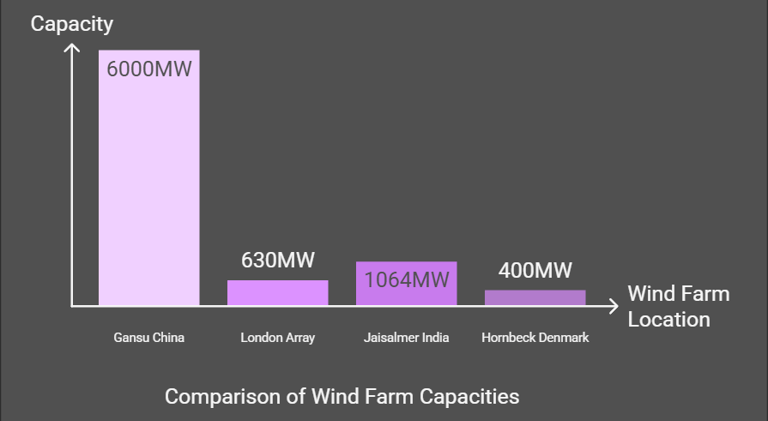

What are the advantages that make these turbines different?
Greater flexibility in terms of suitable sites for them, as these turbines can be deployed in areas that are difficult to access or in areas where wind speed and direction change significantly, such as mountainous or coastal areas.
The cost of establishing and operating these turbines in the future may be lower compared to traditional land turbines, especially in some cases, but it is still high in cost now. These turbines do not require the construction of large infrastructure, which reduces their environmental impact.
What are the challenges facing this technology?
• Storage: There are still challenges in storing the energy produced from these turbines, especially in remote areas.
• Dependence on Weather: The efficiency of these turbines depends largely on wind conditions, making them susceptible to weather fluctuations.
• Safety: The safety of flying and operating these turbines must be ensured, especially in populated areas.
Flying wind turbines are a promising technology in the field of renewable energy, but they are still in the early stages of development. Many startups, traditional energy companies, research institutions, and universities are conducting further research and development. These turbines can play an important role in the future of clean energy.
Challenges facing wind power projects today:
• Infrastructure: The necessary infrastructure must be available to transfer the electrical energy produced from wind farms to the electricity grid.
• Government Support: Many governments provide financial incentives and legislative support for wind power projects, but this support remains limited in some countries.
• Environmental Awareness: Increasing awareness of the importance of renewable energy and the impact of climate change drives investors and companies to invest in wind power projects.
• Financial Costs: Establishing wind farms requires large initial investments. The cost of some composite materials is still high, which represents a challenge to reducing the cost of producing wind turbines. Studies and experiments in this field are still ongoing, which promises a very important future.
In general, many studies indicate that wind power projects can achieve a return on investment within a period ranging from 5 to 15 years, with significant savings in energy costs in the long term. Some studies have indicated that wind energy can provide energy savings of up to 80% of the costs of generating electricity compared to traditional methods in some cases.
Future Challenges:
• Environmental Impact: Although it is clean energy, building wind farms in areas that are not well studied may affect wildlife and the marine environment.
• Storage Cost: The cost of energy storage systems is still relatively high.
• Integration with the Electricity Grid: Integrating large amounts of renewable energy into the electricity grid requires the development of smart network management systems.
• Community Acceptance: Wind power projects may face opposition from local communities due to visual and noise impacts.
• Recycling: Recycling fiber-reinforced composites is an environmental challenge.
• Research and Development: Continuous research is being conducted to develop new materials with better properties and lower prices.
Conclusion:
The field of wind energy is witnessing rapid technological developments, which makes it a promising option for achieving a sustainable energy future. With the continuation of research and development, we can expect more innovations that will contribute to enhancing the role of wind energy in the global energy mix.
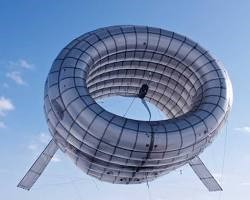

Share the post
Subscribe to our newsletters:
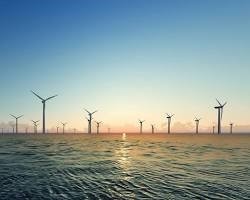

London Array Wind Farm:
The London Array Wind Farm is located off the coast of Essex County in southeast England, and it is the largest offshore wind farm in the United Kingdom upon its establishment. This farm is characterized by its high production capacity, which contributes significantly to meeting the energy needs in the region.
The farm consists of hundreds of large wind turbines, making it one of the largest offshore farms in the world in terms of production capacity. The farm uses the latest technologies in the field of wind turbines, which ensures high efficiency in generating energy.
The site where the farm was established is located in an area characterized by the presence of strong and steady winds, which increases the productivity of the farm. The farm was designed and built with the least environmental impact, where the preservation of marine life and the marine ecosystem was taken into consideration.


